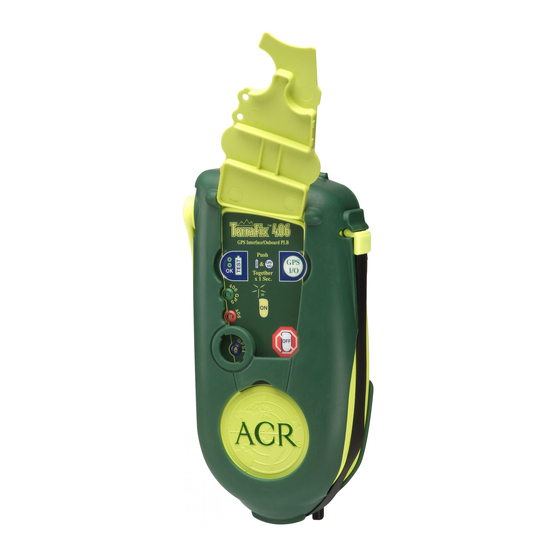5.2.2 COSPAS-SARSAT is an international system that uses Russian Federation and United States low
altitude, near-polar orbiting satellites (LEOSAR) that assist in detecting and locating activated
121.5/243 MHz PLBs and 406 MHz Satellite PLBs.
5.2.3 COSPAS and SARSAT satellites receive distress signals from satellite PLBs transmitting on the
frequency of 406 MHz. The COSPAS-SARSAT 406 MHz satellite PLB signal consists of a
transmission of non-modulated carrier followed by a digital message format that provides
identification data. The 406 MHz system uses spacecraft-borne equipment to measure and store the
Doppler-shifted frequency along with the satellite PLB digital data message and time of
measurement. This information is transmitted in real time to an earth station called the Local User
Terminal (LUT), which may be within the view of the satellite, as well as being stored for later
transmission to other LUTs.
5.2.4 The LUT processes the Doppler-shifted signal from the LEOSAR and determines the location of the
satellite PLB; then the LUT relays the position of the distress to a Mission Control Center (MCC)
where the distress alert and location information is immediately forwarded to an appropriate Rescue
Coordination Center (RCC). The RCC dispatches Search and Rescue (SAR) forces.
5.2.5 The COSPAS-SARSAT System includes
19
Mission Control Centers that provide real-time as well as global-mode coverage for the Northern
Hemisphere, while the Southern Hemisphere is presently served primarily by the global mode.
Additional LUTs and MCCs are planned for installation in the near future both in the northern and
southern hemispheres.
The addition of the GEOSAR Satellite system greatly improves the reaction time for a SAR event.
This satellite system has no Doppler capabilities at 406 but will relay the distress alert to any of the
LUT stations. When there is GPS data included in the distress message, SAR authorities instantly
know your location to within 110 yards. This speeds up the reaction time by not having to wait for
one of the LEOSAR satellite to pass overhead.
5.2.6 Because most of the search and rescue forces presently are not equipped to home in on the 406 MHz
Satellite PLB signal, homing must be accomplished at 121.5 MHz.
36
LEOSAR LUT stations,
9
SATELLITE COVERAGE
Figure 5
6
GEOSAR LUT stations and
Y1-03-0174 Rev. A Draft

